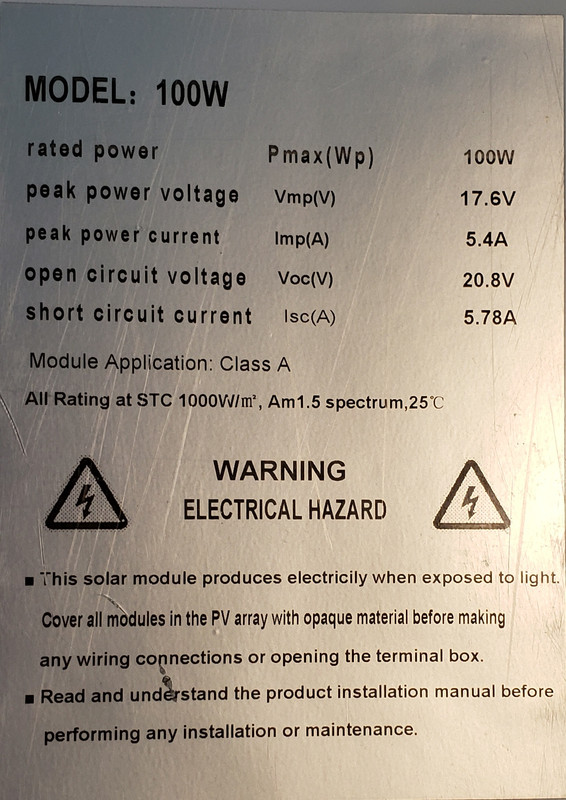Qwazert
Jul 31, 2022Explorer
A few more questions about solar panels...
As you may recall...I had some issues with my solar panels/batteries a few weeks ago.
https://www.rv.net/forum/index.cfm/fuseaction/thread/tid/30348700.cfm
I've since bought a new controller (because the old one would show the batteries as Charged even though they obviously weren't) and I've come across another puzzle....
The controller is a RENOGY Voyager, rated at 20 amps which should be sufficient for my 100W panels.
Here are the details of my solar panels: The first is an offshore-made flexible type...

and the second is a rigid style, like the type you get mounted to a roof...

As you can see, the specs are fairly close and do NOT exceed the ratings on the controller.
Here's the interesting part; when I connect only ONE panel I get a charging current of around 2-3A.
If I connect the second one in parallel, the charging current either stays the same or decreases slightly.
The controller has built in reverse polarity protection and it gives no errors, so I'm 99.9% certain that the panels are connected properly.
So why am I getting LESS current with the second panel connected?
Does the controller sense that less is required because the batteries are fully charged (still connected to shore power)?
https://www.rv.net/forum/index.cfm/fuseaction/thread/tid/30348700.cfm
I've since bought a new controller (because the old one would show the batteries as Charged even though they obviously weren't) and I've come across another puzzle....
The controller is a RENOGY Voyager, rated at 20 amps which should be sufficient for my 100W panels.
Here are the details of my solar panels: The first is an offshore-made flexible type...

and the second is a rigid style, like the type you get mounted to a roof...

As you can see, the specs are fairly close and do NOT exceed the ratings on the controller.
Here's the interesting part; when I connect only ONE panel I get a charging current of around 2-3A.
If I connect the second one in parallel, the charging current either stays the same or decreases slightly.
The controller has built in reverse polarity protection and it gives no errors, so I'm 99.9% certain that the panels are connected properly.
So why am I getting LESS current with the second panel connected?
Does the controller sense that less is required because the batteries are fully charged (still connected to shore power)?